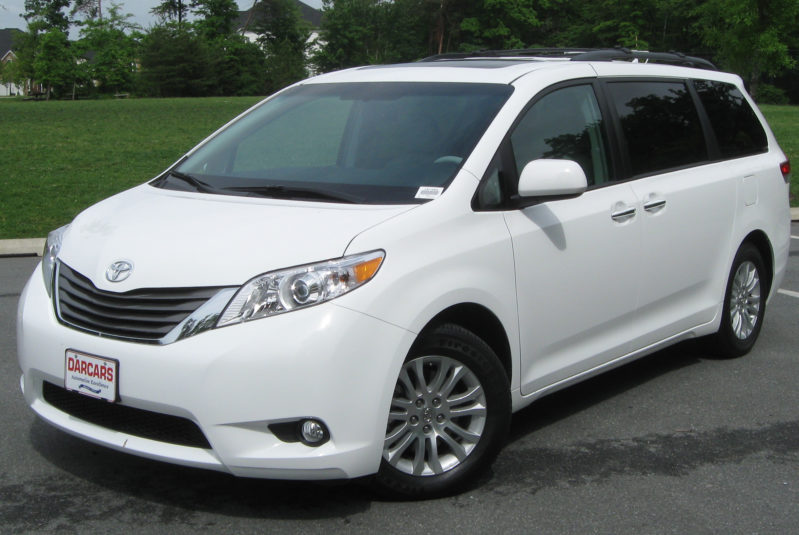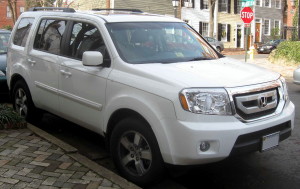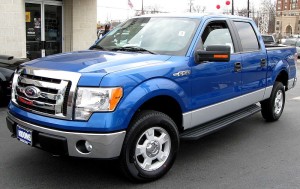
One of the most persistent myths about driving in the United States is that four-wheel drive vehicles (4WD) are safer than two-wheel drive (2WD) equivalents. It doesn’t matter whether the vehicles involved are SUVs, crossovers, cars, minivans, pickup trucks, or station wagons–if they’re 4WD, they’ve got to be safer, because four powered wheels means more control, which ultimately means a safer way of getting your loved ones home, right?
Not right.
As with many other elements of best practices, what’s commonly done isn’t necessarily what’s safest. Today we’re going to look at IIHS driver death rate data and review how, in the majority of cases, having 4WD in a vehicle doesn’t make it any more likely to keep you alive than using the same vehicle (or even the same kind of vehicle) in 2WD. The goal here isn’t to make you give up your 4WD SUV; it’s simply to show that it’s not inherently safer than its 2WD equivalent, and that it doesn’t give you any leeway whatsoever with respect to the other two pillars of driving safety—how you drive and where you drive.
Do 4WD SUVs/cars/minivans/pickup trucks have lower driver fatality rates than 2WD vehicles? If not, why not?
No, there isn’t a significant difference in driver death rates between 4WD and 2WD vehicles; this has been shown for years in IIHS driver death rate studies, although the IIHS once erroneously thought that 4WD was safer (see Status Report Volume 46, No. 5, when they split death rate reports by vehicle drive type). They realized their error by the following death-rate-focused status report (Vol. 50, No. 1) and got rid of what was a meaningless way of dividing the data. Let’s look at the most recent survey, Volume 52, No. 3. What follows are various models of minivans, SUVs, cars, and pickup trucks where driver death rate data was available for both 4WD and 2WD trims, as well as confidence intervals in parentheses.
2011-14 Toyota Sienna
4WD – 10 (1-37), 2WD – 9 (2-16).
 I wrote specifically about the Sienna when comparing it to the Odyssey here. The 4WD and 2WD driver death rates were statistically identical, as the confidence intervals overlapped between both trims. Both were also statistically indistinguishable from the 2WD Odyssey.
I wrote specifically about the Sienna when comparing it to the Odyssey here. The 4WD and 2WD driver death rates were statistically identical, as the confidence intervals overlapped between both trims. Both were also statistically indistinguishable from the 2WD Odyssey.
2011-14 Honda Pilot
4WD – 15 (5-25), 2WD – 17 (3-32).
 I recently wrote about the Pilot in the context of how neither the 4WD nor 2WD trim had any statistical safety advantages over the 4WD or 2WD trims of the much smaller Honda CR-V. As noted in that article, both trims of the Pilot were also indistinguishable from each other based on driver death rates.
I recently wrote about the Pilot in the context of how neither the 4WD nor 2WD trim had any statistical safety advantages over the 4WD or 2WD trims of the much smaller Honda CR-V. As noted in that article, both trims of the Pilot were also indistinguishable from each other based on driver death rates.
2011-14 Mercedes-Benz E-Class sedan
4WD – 5 (0-26), 2WD – 4 (0-22).
 Not many cars outside the luxury market are sold in large numbers in 4WD and 2WD trims; fortunately, the E-Class is a perennial best seller and had enough sales to show, once again, that the 4WD and 2WD trims were statistically identical from a driver survivability perspective. Even the confidence intervals were nearly identical. To put it simply, if you crashed an E-class, it wasn’t because you were in a 4WD or 2WD.
Not many cars outside the luxury market are sold in large numbers in 4WD and 2WD trims; fortunately, the E-Class is a perennial best seller and had enough sales to show, once again, that the 4WD and 2WD trims were statistically identical from a driver survivability perspective. Even the confidence intervals were nearly identical. To put it simply, if you crashed an E-class, it wasn’t because you were in a 4WD or 2WD.
2011-14 Ford F-150 SuperCrew
4WD – 24 (17-31), 2WD – 22 (10-34).
 Finally, our token pickup, the F-150, showed again that driver survivability had nothing to do with whether the transmission was 4WD or 2WD. The confidence intervals overlapped again, as they did in all of the examples above, showing that, from a mathematical standpoint, there was no difference in the safety of either trim.
Finally, our token pickup, the F-150, showed again that driver survivability had nothing to do with whether the transmission was 4WD or 2WD. The confidence intervals overlapped again, as they did in all of the examples above, showing that, from a mathematical standpoint, there was no difference in the safety of either trim.
Why aren’t there safety differences between 4WD and 2WD?
The reasons why there aren’t safety differences is because there aren’t any special powers inherent in 4WD transmissions. They’re simply transmissions where all four wheels are powered instead of the front or back two. Once a vehicle is in motion, all four wheels are in motion, powered or not. A 4WD system doesn’t help you steer more accurately or stop more quickly; your steering has to do with the overall geometry of your vehicle, your speed, and the quality of your tires. Your stopping power involves many things (to be discussed below), but none of them have to do with whether you’re driving a 4WD transmission or a 2WD transmission. And as I’ve said many times before, the lion’s share of how safely you drive doesn’t involve what you’re driving, but how and where.
But what about winter driving? Isn’t 4WD safer on snow and ice?
 No, it isn’t. The sole advantage of 4WD is, when paired with suitable tires, an increased ability to extricate the vehicle from low-traction situations. This means an improved ability to get moving in mud, slush, snow, and similar wet/dry situations. 4WD will not help you stop any sooner than 2WD in a vehicle matched by road conditions, speed, mass, tire size and tread, and brake quality. Every 4-wheeled vehicle on the road already has 4-wheel braking, and ABS will already do more to stop you than you ever could. Similarly, 4WD will not help you steer; every 4-wheeled vehicle already has 2-wheel steering, and ESC will do more to keep you heading in your intended direction than anything you could ever imagine; that’s what makes it life-saving technology.
No, it isn’t. The sole advantage of 4WD is, when paired with suitable tires, an increased ability to extricate the vehicle from low-traction situations. This means an improved ability to get moving in mud, slush, snow, and similar wet/dry situations. 4WD will not help you stop any sooner than 2WD in a vehicle matched by road conditions, speed, mass, tire size and tread, and brake quality. Every 4-wheeled vehicle on the road already has 4-wheel braking, and ABS will already do more to stop you than you ever could. Similarly, 4WD will not help you steer; every 4-wheeled vehicle already has 2-wheel steering, and ESC will do more to keep you heading in your intended direction than anything you could ever imagine; that’s what makes it life-saving technology.
What does make a difference for snow / winter driving safety?
 Winter tires! They’re specifically designed to work through snow and cold conditions, and this is why a 2WD vehicle with winter tires will almost always be a better choice (as in, 99.9% of the time) than the same vehicle (or nearly any vehicle) in a 4WD configuration and all-season tires. On top of this, avoiding driving through snow, limiting driving when avoiding it is impossible, and driving as slowly as safely possible are the best techniques to get you through winter conditions, independent of vehicle and tire choice.
Winter tires! They’re specifically designed to work through snow and cold conditions, and this is why a 2WD vehicle with winter tires will almost always be a better choice (as in, 99.9% of the time) than the same vehicle (or nearly any vehicle) in a 4WD configuration and all-season tires. On top of this, avoiding driving through snow, limiting driving when avoiding it is impossible, and driving as slowly as safely possible are the best techniques to get you through winter conditions, independent of vehicle and tire choice.
What about driving through or over ice? What’s the safest vehicle for ice?
Finally, when it comes to ice, there isn’t a safe vehicle out there that doesn’t use caterpillar tracks, and those kinds of vehicles aren’t street legal. Practically speaking, both 4WD and 2WD are equally helpless (or equally capable, if you’re optimistic); ice results in a loss to complete absence of traction, depending on the quality of the ice. The only way to counteract this actively is through studded tires, which are either restricted or banned throughout the United States. Winter tires will be better than all-season tires, but even they won’t provide dry-road equivalent traction on ice. Avoiding it, followed by driving as slowly as possible through it on winter tires, are your best options if you don’t have studded tires. 4WD won’t make any difference for stopping or steering through it.
Does this mean I should never buy a 4WD vehicle again for safety?
No and yes. If you live somewhere with more than 100 inches of snow a year or where the streets may not be plowed for several days or you have a job that doesn’t allow you to take personal days due to unsafe weather, then you might want a 4WD vehicle in addition to winter tires to increase your odds of not getting stuck on the way to or from work (or wherever you need to drive during or after heavy snowfall). However, this describes around 5% of the US population, and that’s being very, very generous. For the vast majority of people, 2WD paired with winter tires will help you handle any part of winter when paired with good judgment.
 If you find my information on best practices in car and car seat safety helpful, you can buy my books here or do your shopping through this Amazon link. Canadians can shop here for Canadian purchases. Have a question or want to discuss best practices? Send me an email at carcrashdetective [at] gmail [dot] com.
If you find my information on best practices in car and car seat safety helpful, you can buy my books here or do your shopping through this Amazon link. Canadians can shop here for Canadian purchases. Have a question or want to discuss best practices? Send me an email at carcrashdetective [at] gmail [dot] com.

